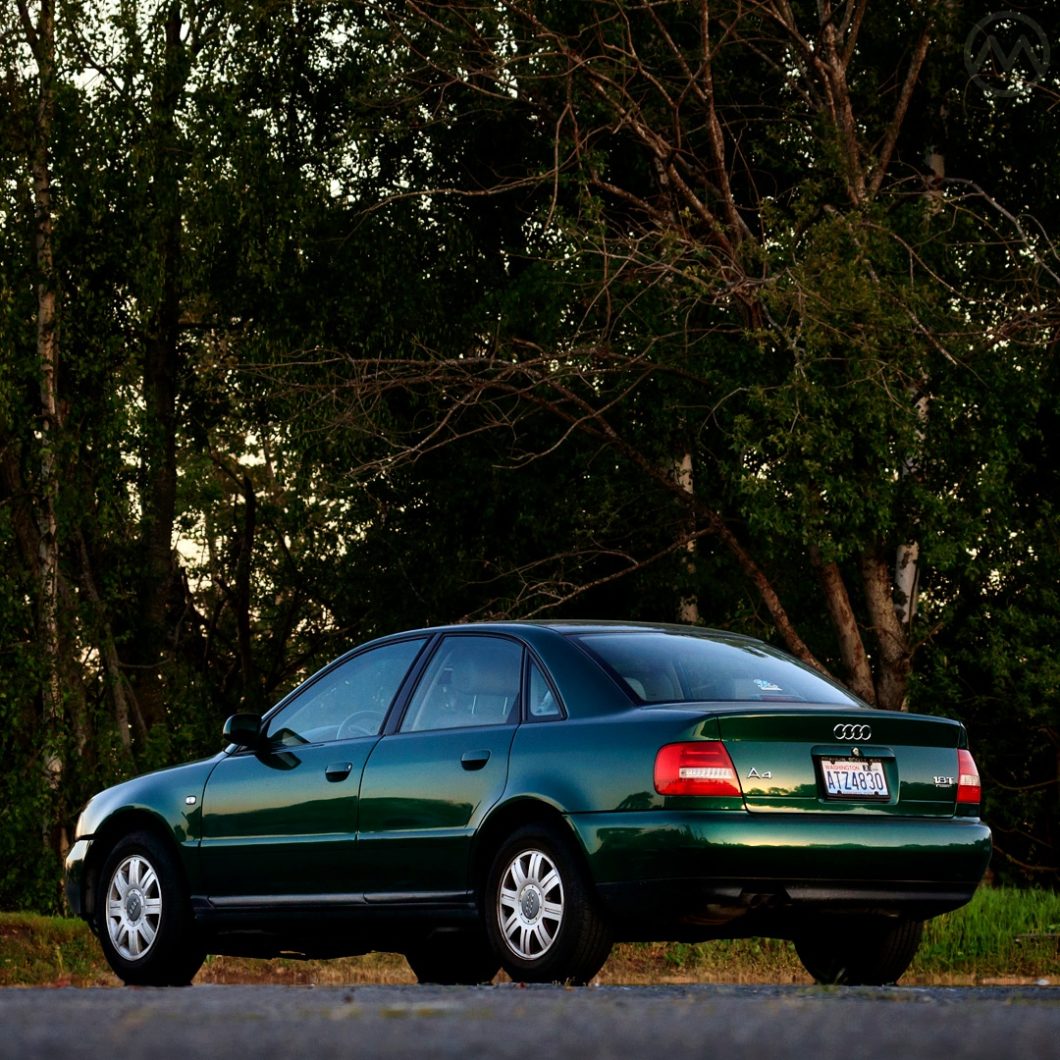In 1992, Audi struggled to move less than 15,000 cars in the United States. Ten years later, it moved more than 85,000. Although Audi reinvented its entire lineup in that time, one car more than any other was responsible for the turnaround.
Although it hasn’t gotten much attention as a classic yet, that car was the first generation A4. It bowed in late 1994 in Europe and about a year later in the USA. in the U.S. for the 1996 model year. The North American press drives happened in October and November of 1995.
The Fall
Seemingly a lifetime earlier, but actually just Nine years prior, 60 Minutes had aired its infamous “out of control” segment. It detailed examples of the Audi 5000’s “unintended acceleration” problem, which it highlighted with a rigged example of the car. That was on November 23, 1986.
After years of investigation, NHTSA concluded that the showcased examples, and many more, were the result of driver error and not the fault of the vehicle. But by then Audi had recalled hundreds of thousands of cars, made shift interlocks standard, and endured years of bad press and scornful jokes.
Up until that time, Audi’s sales had been rapidly growing in the USA since the late 1970s and the trajectory looked very good indeed. Not so much afterward, but not just because of the scandal.
Those subsequent years were filled with unhappy exchange rates and economic headwinds for all pricey European imports in the very late 1980s and early 1990. That included the Gulf War recession, which also greatly hurt VW sales; and new competition from Infiniti and Lexus. Against that tide Audi was also chained to “Unintended acceleration.” At one point Ingolstadt considered leaving the U.S. altogether.
It was around this time – in late 1991 and through 1992, that the car which would trigger Audi’s renaissance was coming together, though development on the new platform had begun in late 1988.
The replacement for the small mid-size 80/90 would ride the new PL45 (B5) platform which would eventually also underpin the VW’s Passat. The exterior was designed by Yugoslavian-born Imre Hasanic, an Art Center College of Design grad who emigrated to Germany as a teenager.
The interior was designed under Jürgen Albamonte; and both designers and their teams worked under the direction of Hartmut Warkuß, who would soon migrate to overseeing VW styling. The first VW design Warkuß would ovesee was the A4’s Volkswagen sister, the B5 Passat.
Light, sharp, rigid, and incorporating tons of new technology, the sleek new car would wear a new name – A4, following the new A8 and renamed A6 (nee 100) in a naming scheme that banished the 80/90/100/200 to history.
Success Story
In Europe, the car was an instant hit – more than 120,000 were sold in the first year in a wide range of configurations. When it arrived in the U.S., the choices were narrower. A 2.8L V6 sat at the top of the line and the then-new VW/Audi 1.8T four below. In time, this 20-valve mill would find its way into dozens of VW products, but at the time it was new and high-tech.
5-valve-per cylinder engines were still exotic technology even in the mid-1990s, though Mitsubishi had used the layout on the tiny Dangan ZZ Kei car and it had appeared in a bunch of exotics and race cars. Audi had begun experimenting with 5V setups in the mid-eighties and tested an experimental 5V inline five in 1988.
The A4 could be front- or all-wheel drive, and a wagon arrived in 1997. Notably, the Quattro versions were only about $1,500 more expensive than the front-drivers early on, so they were very popular. In earlier years, the Quattro system had been an expensive option – as much as $7,000. That limited its appeal even to drivers who genuinely wanted it but were stretching on an Audi 90 in the first place.
As at home, the A4 was a hit in the U.S. and the first of the new breed of Audis to reach U.S. shores.
The big A8 was not released in North America until the end of 1996. Smaller A3 and A2 models debuted in the years after the A4, representing a return to smaller cars absent from the Audi line since the 1970s Audi 50. But these cars weren’t offered in North America or if they were, not until the mid-2000s (A3).
That made the A4 the most accessible Audi and the entry to the brand for many new customers. As a result it had a huge hand in Audi’s revival.
Subsequent A4s hued close to the style of the original for at least the first decade, though it has grown larger over time (particularly after 2008). The second-gen A4 was styled by Peter Schreyer in the late 1990s. By then Hasanic had left to become a fine artist (you can see his various exhibits all over the world today).

